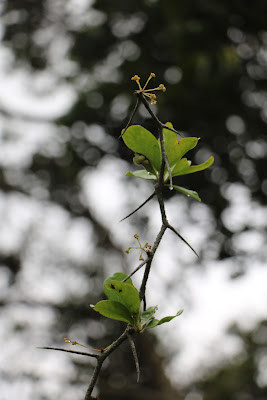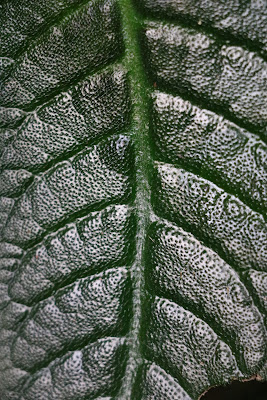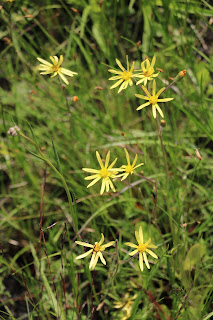The blog starts off with a sighting that Anne Skelton observed on Wednesday
3rd of November. We spent the second day packing up the herbarium at Becon Hill
as the valuable contents of the plant specimens that had taken decades of
collecting by the late and honorable Mr. Hugh Nicholson and Mr. Tony Abbott
were being relocated to the Pietermaritzburg U.K.Z.N.'s herbarium so that the
records could be more accessible to researchers.
We had spent the majority of the day inside the herbarium and decided that
since it was such a beautiful day to stretch our legs and get some sun-shine
onto our backs and some fresh air into our lungs. We set off down the
meandering path and Anne stopped and looked down upon a Pachycarpus.
Anne carefully pried the petals gently open as to not cause any harm to
study the flower in more detail. It had elongated and frilly anther
appendages - white membranous structures extending over the gynostegial column
in the middle of the flower. What was revealed thanks to a botanist by the name of Mr. P. Bester was that this was it was Pachycarpus
linearis! It was a find. It is a Pachycarpus campanulatus
group. Well done to Anne on spotting this plant.
 |
| Pachycarpus linearis |
 |
| Pachycarpus linearis |
 |
| Pachycarpus linearis |
 |
| Pachycarpus linearis |
Thursday 4 November
Not having our dear Maggie and Dorothy with us
we decided to leave a little earlier in the morning as there was some
travelling to do and set off freshly. We were headed to Western Heights
and into the Swamp Forest. We came prepared as it's an incredibly swampy
area and one needs good high gumboots if not waders to say the least.
This is certainly not an area one would ever attempt a trail run as its
precarious walking and it's incredibly slow. The grass is so long and yet
one has to balance on marshy mounds as one wrong foot placement could leave one
with a very wet bottom and perhaps only one's hat to be seen if sunk.
Wading over this area is a bit like a Jacana walking on water lilies.
A hot day which left one neck red even
wearing a hat and very bright. The eyes felt a little scorched by the
end of the day and one was grateful if one was wearing protective clothing and
little things flew around stinging. The grass waved in the breeze.
A breeze is wonderful but not when trying to photograph tiny flowers.
Every week there's a new flower that takes the
spot light, a few weeks before it was the Watsonia's, then
the Merwilla plumbea, Kniphofia's, Berkheya's, Cephalaria's and
this week were the orchids. Nature never disappoints if we just take the
time to observe it.
There really was so much to see on this Thursday and the sun and passing clouds
made the scenery all the more beautiful with its changing colour’s of light.
We saw an owl in the Swamp Forest and both the
grasslands and the forest had wonderful orchids in it. Sadly, seed of the
Bugweed had been dispersed by birds and having had "Lock-down" these
flourished and required a team to irradicate them. Only so much could be
done on one day.
It’s such a privilege to be out in nature and
not with another person in sight other than one's own group. To simply be quiet and observe nature to have a passion for one's studies is what makes Thurday's incredible special.




















































































































